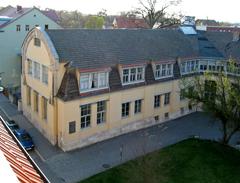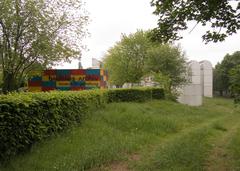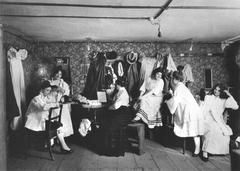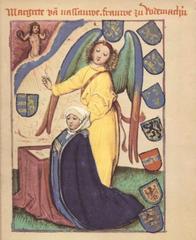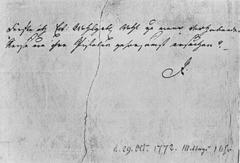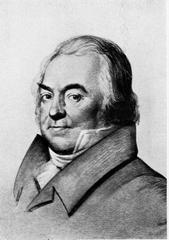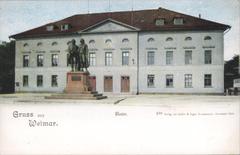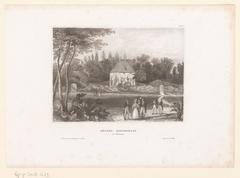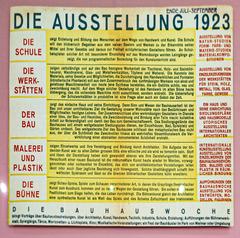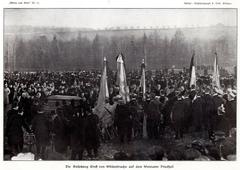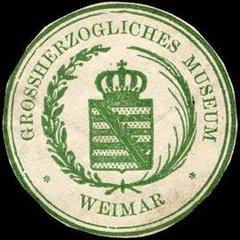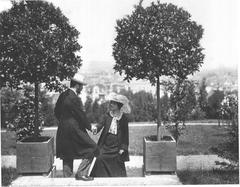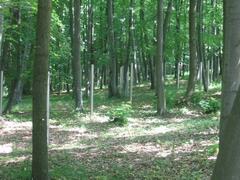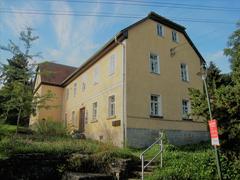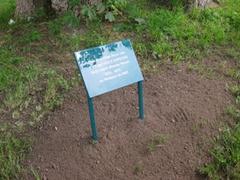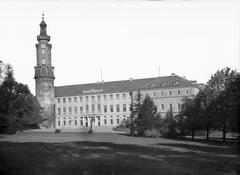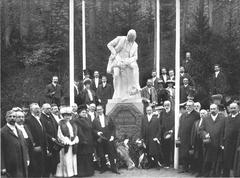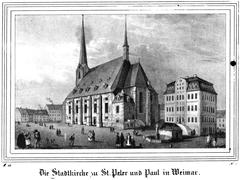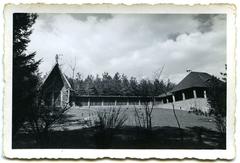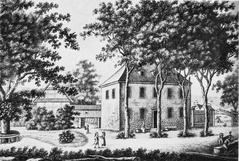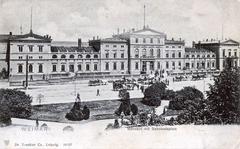
Visiting the Museum Over Franz Liszt (Liszt-Haus) Weimar, Germany: Tickets, Hours, and Tips
Date: 04/07/2025
Introduction
Situated in the heart of Weimar, Germany, the Museum Over Franz Liszt (Liszt-Haus) invites visitors to explore the life, artistry, and legacy of one of the 19th century’s most transformative musical figures. Franz Liszt’s years in Weimar (1848–1861 and 1869–1886) were not only pivotal for his own creative development but also instrumental in positioning Weimar as a center of musical innovation and education. The museum, preserved in Liszt’s actual residence and the historic Altenburg, authentically recreates the ambience of his creative environment while employing modern exhibition techniques.
At the Liszt-Haus, guests encounter original manuscripts, historic grand pianos, personal artifacts, and immersive multimedia displays. Carefully curated exhibitions, such as “Liszt as Mensch, Musiker, und Mythos,” reveal his multifaceted roles as composer, performer, teacher, and cultural visionary. Whether you’re a classical music enthusiast, history lover, or cultural traveler, the museum offers unique insights into Liszt’s enduring influence and the artistic vibrancy of Weimar.
Beyond its permanent collection, the museum hosts concerts, lectures, and workshops that carry forward Liszt’s educational mission, further enriching the visitor experience. Its location near Weimar’s Park an der Ilm and other cultural landmarks—including Goethe’s Garden House and the Bauhaus Museum—makes it a must-see within the city’s UNESCO World Heritage landscape.
This comprehensive guide details everything you need for a rewarding visit: opening hours, ticket prices, accessibility, guided tours, and travel tips, ensuring your experience is both memorable and informative (lisztmuseum.at; klassik-stiftung.de; Britannica; Kurier; HFM Weimar).
Liszt’s Weimar Years: Historical Context and the Museum’s Legacy
After achieving fame as a virtuoso pianist, Franz Liszt settled in Weimar in 1848—a shift that marked the beginning of his most creatively productive period. Encouraged by Princess Carolyne Sayn-Wittgenstein, Liszt devoted himself to composition, teaching, and elevating Weimar as a beacon of musical progress. During his tenure as Kapellmeister, he pioneered the symphonic poem and fostered the careers of composers such as Richard Wagner and Hector Berlioz (Britannica).
The Altenburg, Liszt’s residence, became a vibrant intellectual salon, hosting the “New German School” and serving as a hub for musical and artistic innovation. Today, the museum preserves this legacy, offering an immersive journey through Liszt’s life and the broader cultural ferment of 19th-century Weimar (HFM Weimar; Lisztmuseum.hu).
Museum Location and Architectural Heritage
The Museum Over Franz Liszt occupies Liszt’s final residence at Marienstraße 17, Weimar, adjacent to the scenic Park an der Ilm (Weimar Tourist). The former gardener’s lodge, redesigned in the early 19th century, retains its historic features and original character. Recent restoration expanded the museum’s exhibition space, incorporating sustainable technologies while preserving period elements like wall paintings and facades (Kurier).
Exhibition Highlights: Liszt as Mensch, Musiker, und Mythos
The museum’s exhibitions are organized into three thematic areas:
- The Birthplace: Explore Liszt’s early years, the phenomenon of “Lisztomania,” and his rise as a celebrated performer.
- The Salon: Discover Liszt’s cosmopolitan journeys and his interactions with the artistic elite of Vienna, Paris, Weimar, and Rome.
- The Sound World: Experience historic keyboard instruments, including Liszt’s own Bechstein and Ibach pianos, and listen to original compositions in dedicated audio spaces.
Approximately 150 original objects—including manuscripts, personal items, and period furnishings—are displayed across 250 square meters, curated to reflect Liszt’s artistic philosophy and impact (Kurier).
Practical Visitor Information
Opening Hours
- Summer Season (March 21 – November 1): Wednesday–Monday, 10:00–18:00; closed Tuesdays
- Winter Season (November 2 – March 20): Wednesday–Monday, 10:00–16:00; closed Tuesdays
- Public Holidays: Generally open, but check the official website for exceptions.
Ticket Prices
- Adults: €5.00
- Concessions (students up to 27 years, disabled, military/civil service, trainees, unemployed with proof): €4.00
- Pupils (16–20 years): €2.00
- Children and youth under 16: Free
- WeimarCard holders: Free
Tickets are purchased at the entrance. Group visits (10+ people) can be arranged in advance (Klassik Stiftung Weimar).
Accessibility
The museum is partially accessible. Some historic areas may have limited wheelchair access; visitors with mobility concerns should contact the museum in advance.
Languages
While most exhibits are in German, English-language audioguides and printed materials are available. Staff generally speak English and are happy to assist international visitors.
Guided Tours and Events
- Audioguides: Available in English
- Group Tours: Bookable in advance for up to 20 people
- Concerts & Events: Regular performances and masterclasses are held in the historic salon. Check the events page for schedules.
Duration of Visit
Plan for 1.5–2 hours to explore the exhibitions and enjoy the atmosphere (TripHobo).
Enhancing Your Visit: Travel Tips and Nearby Attractions
- Best Time to Visit: Early mornings or weekdays to avoid crowds, especially between 2:00–3:00 PM when the museum is busiest (TripHobo).
- Nearby Sites: Goethe’s Garden House, Duchess Anna Amalia Library, and the Bauhaus Museum are within easy walking distance.
- Transport: The museum is centrally located and accessible by bus or on foot. Parking is available nearby, but public transport is recommended during busy seasons.
- Amenities: Restrooms and cloakroom available; cafés and restaurants are close by in central Weimar.
- Photography: Policies may vary by exhibit; inquire at the entrance before taking photos.
Restoration and Sustainability
A major renovation completed in recent years restored period interiors, added a new façade, and incorporated sustainable features like a photovoltaic system. The €6.1 million project, completed mainly by local firms, ensures both historical authenticity and modern comfort for visitors (Kurier).
Liszt’s Educational Mission and Cultural Impact
The museum serves as a living center for musical education and research, closely linked to the University of Music Franz Liszt Weimar (HFM Weimar). Interactive displays and programming reflect Liszt’s holistic approach to the arts, while concerts and workshops promote ongoing engagement with his work. The museum is also an active research site, collaborating with the German Liszt Society and other cultural organizations (Lisztmuseum.hu; Weimar.de).
Frequently Asked Questions (FAQ)
Q: What are the opening hours of the Museum Over Franz Liszt?
A: Summer: Wednesday–Monday, 10:00–18:00. Winter: Wednesday–Monday, 10:00–16:00. Closed Tuesdays.
Q: How much do tickets cost?
A: Adults €5, concessions €4, pupils (16–20 years) €2, children under 16 free; WeimarCard holders free.
Q: Is the museum accessible for wheelchair users?
A: Some areas have limited access. Contact ahead for details.
Q: Are guided tours available?
A: Yes, group tours by prior arrangement; English audioguides available.
Q: Can I take photos inside?
A: Photography may be allowed in certain areas—ask staff for details.
Contact and Additional Information
- Address: Liszt-Haus, Marienstraße 17, 99423 Weimar, Germany
- Phone: +49 (0)3643 545 400
- Website: www.klassik-stiftung.de/en/liszt-house/
- Email: [email protected]
For details on group bookings or special needs, contact the Klassik Stiftung Weimar’s visitor service (Weimar Tourist).
Final Tips for Exploring the Museum and Liszt’s Legacy
The Museum Over Franz Liszt offers a compelling blend of history, music, and culture. To make the most of your visit:
- Check current opening hours and events on the official website.
- Arrive early for a quieter experience.
- Combine your visit with other Weimar historical sites.
- Attend a concert or workshop for a deeper connection to Liszt’s artistic world.
- Use the Audiala app for guided audio tours and further cultural insights.
For anyone interested in European musical heritage, Romanticism, or Weimar’s storied history, the Liszt-Haus is an essential destination. Plan your trip, enjoy the museum’s historic setting, and immerse yourself in the legacy of one of music’s true pioneers (lisztmuseum.at; klassik-stiftung.de; Weimar.de).







